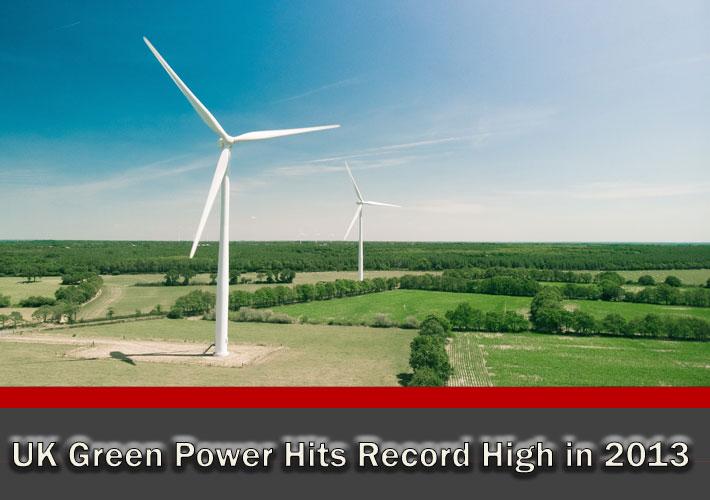UK Green Power Hits Record High in 2013
The UK generated almost 15 per cent of its power from renewable sources in 2013. Record levels, and up from 11.3 per cent in 2012, according to Government statistics released in July. More than 900 new wind turbines were built at land and sea and the annual bill for subsidies reached an estimated £3bn.
However, despite all the efforts to go green, the UK relied heavily on burning coal – one of the dirtiest form of power plants. More than a third of electricity came from coal-fired plants according to the statistics, and two-fifths of the coal imported to the UK was Russian.
Gar generated 27 per cent of Britain’s electricity while nuclear reactors provided 20 per cent of the whole.
The increase in green power came from more wind farms being built, with wind power producing 9 per cent of UK electricity. The wind industry body, Renewable UK, said that more than 900 onshore wind turbines were installed over the course of the year.

The amount of power generated by offshore wind farms increased by 53 per cent as 279 turbines were installed at sea at four different sites.
Energy Secretary Ed Davey said the figures showed that “the Government’s investment in renewable energy is paying off”.
“This massive investment in green energy is accelerating, with 2013 a record year, with almost £8 billion invested across range of renewable technologies,” he said. “Having a strong UK renewable sector helps to reduce our foreign imports of energy, improving our energy security, as well as helping us tackle climate change and creating new hi-tech green jobs.”
Many energy companies are complaining that the government drive for wind farms are leaving some gas plants barely running and having to be abandoned, as Britain chooses heavily subsidised wind power, pushing up household electricity bills.
Coal, gas and nuclear plants all receive the market price of power for the electricity that they generate. Onshore wind farms, on the other hand, receive roughly double the amount for any energy they generate, and offshore wind farms get treble. The difference is subsidised by consumers through levies on their energy bills. Official statistics state that subsidies for green electricity cost consumers around £37 a year on a typical energy bill in 2013. The forecast suggests that this will increase to £85 by 2020.
The Renewable Energy Foundation, a charity critical of the costs of energy subsidies, estimates that annual subsidies were running in excess of £3 billion per year. Separate government statistics show that British consumers paid more than £2.5 billion in subsidies to renewable electricity projects in the year to March 2013. £2 billion of that was to large scale projects, while the rest was on a smaller scale, such as solar panel installation.
The crisis in Russia has driven ministers to argue that there is a need to develop more energy sources in the UK, rather than relying on imported gas. Imported gas accounted for half of the UK gas demand in 2013. The majority came from Norway at 58 per cent, while the rest was from various places including the Netherlands, Belgium and Qatar.

